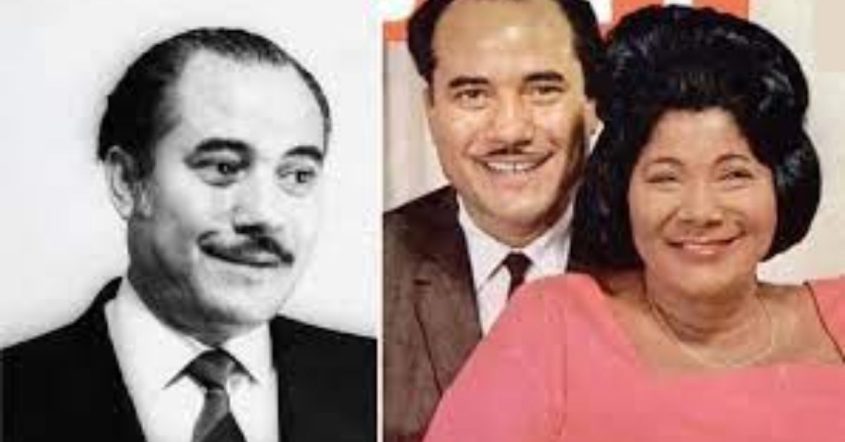Sigmond Galloway was a talented jazz musician known for his passion for music and deep connection to the jazz scene. While he built his career as a respected artist, he is also remembered for his marriage to the legendary gospel singer Mahalia Jackson. Their relationship brought him into the public eye, but his contributions to music remain an essential part of his legacy. This article explores Galloway’s life, career, and impact on the jazz world.
Early Life and Background
Sigmond Galloway was born on May 18, 1922, in Wetumpka, Elmore County, Alabama. He was the son of Randolph Galloway and Mary Lee Courtney. He had two siblings: a brother named Willie Galloway and a sister called Sylvia Galloway McDonald.
Growing up in the South during the early 20th century, Sigmond was part of an African-American family in a region marked by significant social and economic challenges. Details about his early education and childhood experiences are limited, but it’s evident that he developed a passion for music at a young age, which later defined his career path.
In pursuit of better opportunities, Sigmond eventually relocated to Gary, Indiana. This move not only influenced his personal life but also played a crucial role in shaping his musical journey, allowing him to immerse himself in a vibrant and diverse musical community.
Education and Early Interests
Specific details about Sigmond’s formal education are scarce, leaving much of his academic background to speculation. Growing up in the rural South, he was immersed in a close-knit community where family and neighbours supported each other. This environment likely fostered his early exposure to music, as the rich tapestry of musical influences in Alabama played a crucial role in shaping his musical sensibilities.
The vibrant musical traditions of the American South ignited Sigmond’s lifelong passion for jazz. His early years were marked by resilience and curiosity, qualities that would later define his musical journey. In pursuit of better opportunities and to immerse himself in a more dynamic musical environment, Sigmond eventually relocated to Gary, Indiana. This move not only influenced his personal life but also played a crucial role in shaping his musical journey, allowing him to engage deeply with a vibrant and diverse musical community.
Military Service
In 1942, during World War II, Sigmond Galloway registered for the draft in Gary, Indiana. He officially enlisted in the U.S. Army on January 8, 1943, and served until his discharge on February 11, 1946.
While specific details about his assignments and duties during his military service are limited, it’s known that his time in the Army exposed him to diverse cultures and musical traditions. This exposure broadened his musical horizons and influenced his later work as a jazz musician. The discipline and structure of military life also likely contributed to his approach to music and collaboration in his subsequent career.
After completing his service, Sigmond returned to civilian life, carrying with him the experiences and insights he gained during these formative years. These experiences played a significant role in shaping his musical journey and personal development.
Musical Career
After completing his military service in 1946, Sigmond Galloway returned to Gary, Indiana, where he pursued his passion for jazz music. He began performing in local clubs and venues, immersing himself in the vibrant jazz scene of the Midwest. His performances were characterized by a soulful depth and technical proficiency, reflecting his Southern roots and the diverse experiences he had accumulated over the years. Galloway’s dedication to his craft and his unique style earned him respect within the jazz community, contributing significantly to the local music scene.
Relocation to Indiana
Sigmond’s move to Gary, Indiana, was a pivotal moment in his musical journey. The city, known for its rich African-American culture and thriving music scene, provided an ideal environment for his artistic growth. In Gary, he continued to develop his musical talents, performing regularly and collaborating with other musicians. This period in Indiana was marked by significant personal and professional development, as he honed his skills and established himself as a notable figure in the local jazz community.
Throughout his career, Sigmond Galloway remained dedicated to his passion for jazz, leaving a lasting impact on the music community in Gary and beyond.
Personal Life
On December 16, 1949, Sigmond Galloway married Celestine Person in Indiana. Their union lasted until 1962, when Celestine passed away, concluding their 13-year marriage.
Marriage to Mahalia Jackson
In 1964, Sigmond Galloway met renowned gospel singer Mahalia Jackson through mutual friends. Their relationship developed quickly, leading to a private wedding ceremony in Mahalia’s living room the same year.
However, their marriage faced significant challenges. Mahalia’s demanding career and health issues strained their relationship. Financial disputes and personal differences further contributed to their difficulties, leading to their divorce in 1967.
Later Years and Death
After his divorce from Mahalia Jackson in 1967, Sigmond Galloway withdrew from the public eye. He continued to perform occasionally in Gary, Indiana but did not regain his earlier prominence in the jazz scene. His later years were marked by a return to a more private and solitary life.
Sigmond Galloway passed away on May 18, 1972, in Gary, Indiana, at the age of 50. His death marked the end of a life that had once been filled with musical acclaim and public attention.
Sigmond Galloway’s contributions to jazz, though often overshadowed by his association with Mahalia Jackson, are significant in their own right. His unique style, blending elements of jazz and gospel, helped pave the way for future artists who sought to bridge the gap between sacred and secular music.
His marriage to Mahalia Jackson brought him into the broader musical spotlight, but it also led to his work being overshadowed by her fame. Despite this, Galloway’s dedication to his craft and his unique style earned him respect within the jazz community.
In Indiana, particularly in Gary, Galloway’s influence on the local music scene was profound. His performances resonated deeply with audiences, crossing boundaries and leaving a lasting impression with every soul-stirring note. His legacy continues to inspire musicians in the region, reflecting his enduring impact on the community.
Conclusion
Sigmond Galloway was born on May 18, 1922, in Wetumpka, Alabama. He developed a passion for jazz music early in life, which he pursued professionally after serving in the U.S. Army during World War II. Galloway’s musical journey led him to Gary, Indiana, where he became a respected figure in the local jazz scene. His marriage to renowned gospel singer Mahalia Jackson in 1964 brought him into the national spotlight, though their union ended in divorce in 1967. Galloway continued his musical pursuits until his death on May 18, 1972, in Gary, at the age of 50.
While he may not have achieved widespread fame, Galloway’s dedication to his craft and his contributions to the jazz community, particularly in Indiana, remain noteworthy. His life reflects the rich tapestry of American jazz history and the personal challenges faced by musicians of his era.
















